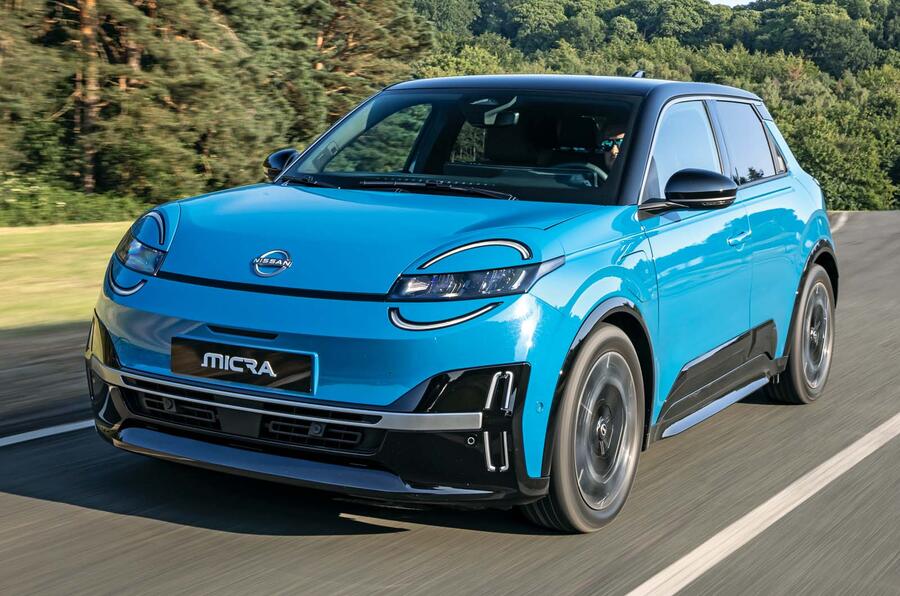Is there a supermini whose character, over the years, has changed as much as that of the Nissan Micra? At least in the eyes of its maker, if not in the minds of its buyers.
The first-generation Micra was a sturdy, box-like thing, as plain as cars come. The second one was much more rounded and funky, Europeanised, even, to the point that it won Car of the Year in 1993 – the first Japanese car to do so.
The third model took the idea ran with it, going more upmarket still, being cutesy and classic, with Bakelite-style interior switchgear and traditional fabrics. It felt expensive, and maybe, to make, it was.
And then came the 2010 disaster: it was a car that felt so cheap and rough that when we said as much, the good people of Nissan agreed. Sometimes, they explained, they would take offence at a verdict and tell us why we were wrong, or why they thought we were wrong, but in other cases a drubbing in the media would give them a way to convince their bosses they should do it differently.
This was one of those cases, and Nissan duly did better with a 2016 Micra that was a markedly decent thing, if not markedly interesting. It went off sale in 2022.
In the meantime, Nissan’s rivals had been making superminis that were sometimes great and sometimes fine but fundamentally consistent; at least they were always trying to be the same thing.
Ford made a bunch of Fiestas that each felt every inch like Fiestas. Even now Renault’s new Clio is trying to occupy basically the same position as the Nicole-Papa original, as the most chic of the superminis.
All kinds of cars try to retain their core ethos, in fact. If you climbed into, say, a BMW 3 Series today, I think you could probably tell it’s trying to do basically the same thing as a 3 Series from three or more decades ago.
But here comes another new Micra. Yes, it’s another reinvention, this time as a cute electric car, but, it seems, it’s different from previous Micras not only in powertrain but also in character (again). “Think you know me? Think again,†said the teaser on Nissan’s website ahead of the launch. “It’s been a while, and I’ve had a glow up. Let’s meet up soon. You won’t believe the difference.â€

Won’t I? I wonder if that’s (a) true and (b) a shame if (a) is the case. Because while Nissan may well think its Micra has done different things, then, 2010 calamity aside, I wonder how much buyers have noticed or cared.
Like it or not, and I get the impression Nissan doesn’t like all of it, the Micra has gained a reputation as steady and reliable if uninteresting transport. As its exterior designer Yongwook Cho told us, the new car’s design is meant to make it “a grandma car no moreâ€.
That’s a theme you come across now and again in consumerism: a producer of something – cars, clothes, radio shows – seeks to throw off an image as being popular with the elderly and tries to bring in a new, more youthful audience.
And to an extent I understand it, if the current image is actually harmful. I know people deep into their sixties who still think Jaguars are cars for old men, and they wouldn’t buy one even if they could.
So I get why Jaguar, as a maker of glamorous sports cars, which it would be nice to think it will be again soon, would try to make itself attractive to a younger audience. Because even if the young haven’t got any money, it will appeal to the old who don’t want to seem old.
But is being a supermini admired for its sturdiness, reliability and sensibleness really so bad? As people stay both in work and healthy for longer, the difference between young and old is less marked than it was.
And whatever the age, what’s so bad about a supermini that’s reliable, easy to use and not sold by spivs? In short, I think it’s possible to make a supermini that will appeal to everyone, without cheesing off a certain section of drivers by implying it’s not for them. Assuming they’re listening, of course.
Buyers have decided for themselves what the Micra is in the past. There’s no reason to think they won’t this time, too.


